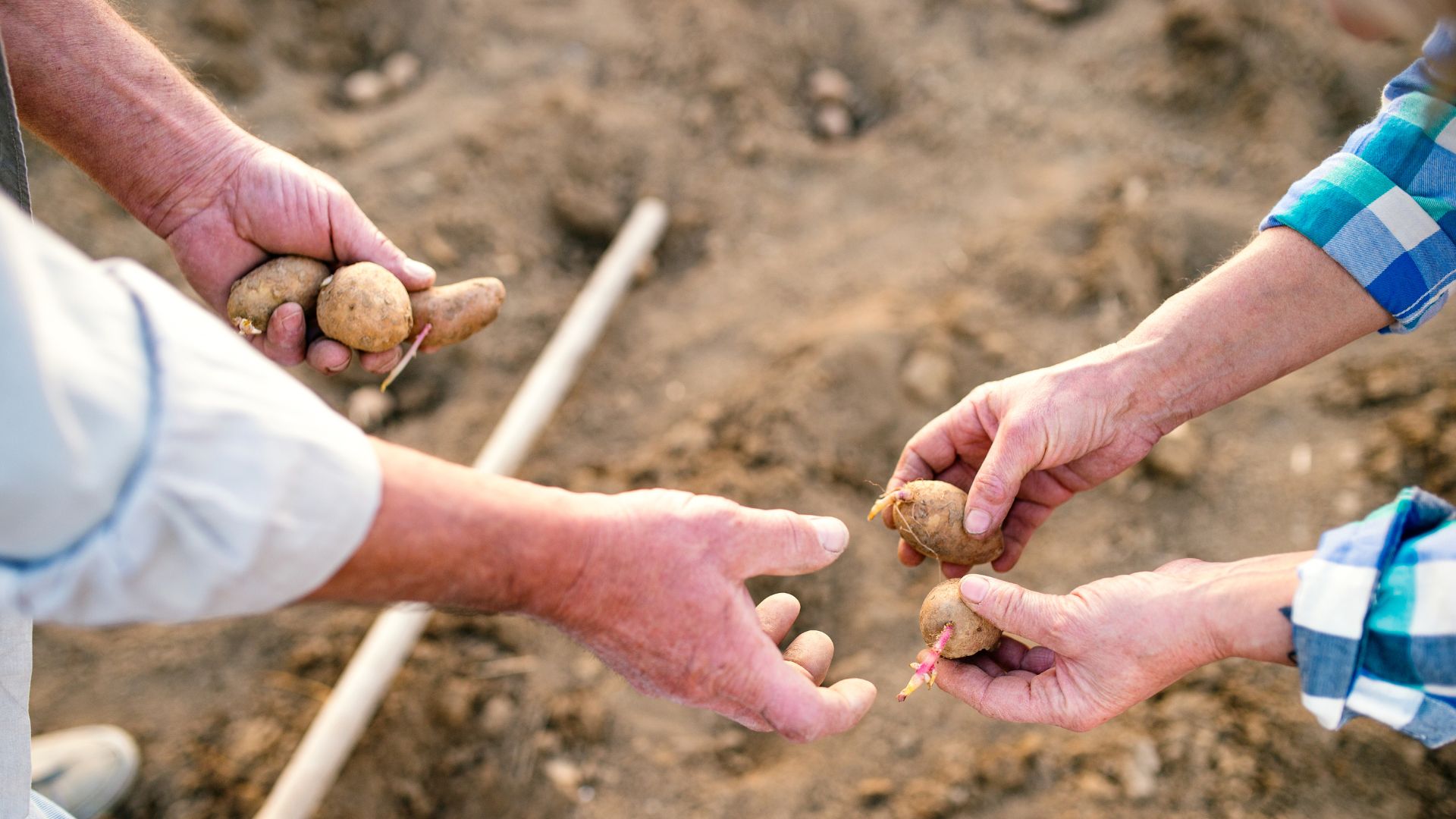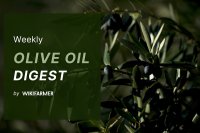Depending on the plant species and the goal of the farmer or the scientist, plants can be propagated sexually (forming viable seeds) or asexually-vegetatively. Asexual or vegetative propagation is the process of multiplying a plant by using a vegetative part and producing a clone that is 100% genetically identical to the parent plant.
Advantages and Disadvantages of vegetative plant propagation
Vegetative propagation is essential for maintaining some plant species and protecting their genetic composition. This is especially important for crop production for almost all tree species, from apples to bananas, but also for other major crops such as potatoes. Nowadays, there are plenty of examples of crop varieties that have been used for more than a century, like Red Delicious (apples) or Bintje (potatoes).
Vegetative propagation is preferred in polyploids (in plant species with more than 2 copies per chromosome, e.g., triploids, tetraploids, hexaploids, etc.). While many of these species may maintain a level of self-compatibility for sexual reproduction, most have a lower capability to produce viable seeds.
With vegetative propagation, the grower also has the advantage of producing larger, more vigorous transplants that can be planted in the field and grow (and thus yield) faster.
However, despite the many advantages of vegetative propagation, there are some critical drawbacks. The most important is the transmission of a disease from the parent plant to the clone plant. Moreover, due to the difficulty of breeding new varieties, growers are cultivating very few varieties of each specific species, leading to large areas of monoculture for decades. These vast areas of monoculture with genetically identical plants make the plantations less resilient and highly susceptible to certain diseases. Bananas, coffee and kiwifruit trees, potatoes, and many more crops have faced extended losses in recent history. At the same time, using only very few varieties per species has led to a genetic bottleneck and the loss of valuable genetic diversity.
Different types-techniques of vegetative plant propagation
Vegetative propagation may occur naturally or guided by humans. There are specific plant structures designed exclusively for this purpose. Some are bulbs, stolons or runners, tubers, and rhizomes. Artificial vegetative propagation techniques are essential for numerous horticulture crops, mainly herbaceous landscape plants. The most common methods are cutting, grafting, budding, division, and layering. Tissue culture is also a method of vegetative propagation that is mostly used for scientific purposes in the lab (in vitro propagation) that requires specialized equipment and facilities and highly trained-skilled technicians.
Plant Propagation by Cuttings
Cuttings can be taken from different plant parts like stems, leaves, and roots. However, stem cuttings are most commonly used in agriculture.
Stem Cutting
Using stem cuttings is one of the most common ways to propagate many plant species. In all cases, the cut should be performed with a sharp knife or a saw below and close to a node (the cutting should have at least 2 nodes). It is essential not to injure the bud. There are 4 main types of stem cuttings:
- Herbaceous cutting → more common in herbaceous plants. A small piece of stem is cut from the parent plant, the lower leaves are removed, and the cutting roots relatively quickly.

- Softwood cuttings and Semi-hardwood cuttings → the shoot cuttings of these types come from current season growth and are obtained in early summer (for the first type) to late summer-early fall (for the second type). Evergreen shrubs and conifers can be propagated this way.
- Hardwood cuttings (straight, mallet, heel) → most deciduous, and many evergreen shrubs can be propagated with this technique. In all cases, the cuttings are obtained from the parent plant during the dormant phase (fall or early winter).
The end tip of the cutting that will be placed on the soil (or in another medium like coarse sand or peat and perlite) can be treated with some rooting hormones to facilitate or speed up the development of roots. Usually, products containing axin in combination with a fungicide are used.
Vine cuttings and tip stem cutting are also used to propagate some vegetables like sweet potato, tapioca, cassava, and pointed gourd.
Plant Propagation by Grafting and Budding

It is the technique of asexual propagation of joining-combining 2 different plant parts together to grow a new plant. It is mainly used for the propagation of cultivars that stem cuttings do not root easily or in case the root system is weak or susceptible to specific factors (abiotic or biotic). The great advantage of this technique is that the new plant will have the best characteristics of both parts-varieties combined and will reach maturity faster.
The cultivar of interest will be the scion (that will produce the above-ground plant parts). In the case of grafting, a part of the stem (with dormant buds) is used, and in the case of budding, a single bud is used. The plant part of another plant that will produce the root system (and maybe the lower part of the stem) is called the rootstock, stock, or understock. Usually, the variety used as a scion is chosen for the superior-desirable fruiting, foliage, flowering, and growth characteristics. On the other hand, the rootstock may be chosen for different characteristics like resistance to drought or salts, soil-born pathogens, and pests and to produce plats-tress of smaller height (dwarfing).
To have a successful union of the scion and the rootstock, it is essential that:
- The scion and the rootstock are compatible.
- Both plant parts should be at the proper physiological stage.
- The cambial layer (cambium) of both must be in contact.
- The union point should not dry or be infected until the wound is healed.
- The new plant should be properly handled after the grafting (irrigation, fertilization, protection from high temperatures and infections, etc.).
There are 4 types of grafting: cleft or wedge grafting, bark grafting, whip or tongue grafting, splice grafting, and apical-wedge grafting (which works mainly for cacti). The wedge and bark grafting are mainly used in trees to change a variety at the field (very common in orange trees). Similarly, there are 3 types of budding: chip budding, T-budding (shield budding), ring budding, and patch budding.
Splice grafting is an easy technique used for grafting vegetables like tomatoes. In this case, both plants that will be used either as scion or as rootstock should have up to 0.5 inches of stem diameter. The incision should be made at an angle. When you bring both plant parts together, wrap the area with a rubber grafting strip-clip or twine.
Propagating Plants by Division

The division is a very easy and commonly used propagation technique applied mainly in herbaceous perennial plants (typical examples are chrysanthemums) with more than one rooted crown or sometimes in woody shrubs that produce stolons, runners, or suckers from the plant’s base (typical examples are strawberries and raspberries). The crown division should generally be performed before the new growth starts and never during flowering. In the case of woody shrubs, the division should take place when the plant is dormant. Usually, the different crowns are pretty distinct, and separation is easy. However, in some cases, the grower may need to separate the different parts using a knife or a shovel (for larger plants). It is essential to avoid damaging the donor plant.
Plant Propagation with Layering

It is a process that may happen naturally or assisted-encouraged by a plant propagator. It involves the rooting of a stem when it comes in contact with a rooting medium (e.g., soil) while still attached to the parent plant. After the successful rooting, the plant part is cut from the mother plant. There are different types of layering:
- Simple layering → A shoot/branch is bent, a part of it is covered with soil, and the tip is left above the ground.
- Tip layering (for plants with railing type of shoots) → the tip of a shoot of the current year is berried into the ground.
- Compound (serpentine) layering → Similar to simple layering, but in this case, the shoot used is longer, more flexible, and is alternatively covered by soil, leaving the in-between shoot parts exposed (above the ground).
- Mound (stool layering) → During dormancy, the plant is cut at the ground level and is covered by soil (hilling or earthing up).
- Air layering (gooty or marcottage) → In this case, the rooting of the shoot takes place above the ground. An aerial shoot is chosen, and a strip of the bark of 2-3.5 cm (0.8-1.4 inches) width is removed below a node. The area may need to be treated with a growth regulator to promote rooting. After that, the area is covered with a rooting medium (sphagnum moss, ideally) that ensures a stable moisture content and is tied with a polyethylene sheet.
This propagation technique is easy, with a high success rate, and it is chosen when a plant cannot be propagated efficiently by cuttings. To ensure the success of the process and a good root formation, it is essential to have a steady moisture supply, a moderate temperature, and good aeration.
Further reading
What is Plant Propagation – Types and characteristics of Sexual and Asexual propagation material
Sexual Propagation of a Plant – Everything around seeds
References
- https://www.ncbi.nlm.nih.gov/pmc/articles/PMC5737615/
- https://www.sciencelearn.org.nz/resources/1662-vegetative-plant-propagation
- https://mastergardener.extension.wisc.edu/files/2019/02/PlantPropagationMG.pdf
- https://www.researchgate.net/publication/355393673_Methods_of_Propagation_in_Vegetable_Crops
- https://www.nzdl.org
- https://extension.unh.edu/sites/default/files/migrated_unmanaged_files/Resource003548_Rep5073.pdf
- https://tmnehs.gov.in/writereaddata/Chap-4.pdf
- https://crfg.org/
- https://gacbe.ac.in/pdf/
- https://extension.purdue.edu/
- https://sfyl.ifas.ufl.edu/media/sfylifasufledu/wakulla/images/master-gardeners/Plant-Propagation.pdf







